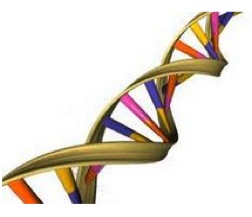 Viral genomics is the study of the full composition of viral genetic source material in the environment. Studies utilizing new technologies are identifying an enormous range of viral diversity that is typically invisible to standard studies. The hologenomic participants in an ecology cannot be fully understood unless these entities are identified. The metagenomic approach has improved our understanding of viral epidemiology, the impact of viruses on our evolutionary transit and has impacted and accelerated the discovery of previously unsuspected viral participants.
Viral genomics is the study of the full composition of viral genetic source material in the environment. Studies utilizing new technologies are identifying an enormous range of viral diversity that is typically invisible to standard studies. The hologenomic participants in an ecology cannot be fully understood unless these entities are identified. The metagenomic approach has improved our understanding of viral epidemiology, the impact of viruses on our evolutionary transit and has impacted and accelerated the discovery of previously unsuspected viral participants.
Part of the difficulty in identifying viral strains is that many viruses are difficult to amplify in cell cultures. However, there are now numerous molecular techniques to genetically characterize and identify new viruses without the limitations of prior techniques requiring targeted reagents. The range of ecologies to which these new techniques have been applied is quite far reaching. For example, seawater, feces, shore sediments, plasma, or respiratory secretions are only a few. The product of these investigations is a new understanding of the profound variety and influences of viral loads on every ecology.
Among other things learned to date, unbiased characterization of viral loads on various populations is challenging our prior notions of ‘sterile’ environments. Such studies need not apply to just viral load however. In 2013, a new species of bacteria was discovered in the ‘clean’ rooms used by NASA to build their spacecraft. It had been previously assumed that these specialized rooms were sterile. However, as it has been discovered, this was an unwarranted assumption. In 2007, an unusual bacterium was identified that had eluded all known and repeated sterilization methods. Two years later, this same bacterium was identified inside a clean room at the European Space Agency’s launch site in South America, nearly 2500 miles distant from the site at which it was first discovered. Analysis showed that it should be considered not only a new species, but also an entirely new bacterial genus with a unique molecular composition of its cell wall and other differentiating properties.
Metagenomic studies based on new techniques beyond outdated cell culture methods allow researchers to identify a wide variety of microbial life that has been hidden from our purview. Some of this previously invisible life as already hitched a ride to any place in space that we have attempted to explore. Surely this is unintentional, but the implications are as yet unknown.
Hologenomic evolution theory asserts that all multicellular organisms are highly complex and largely specific united co-dependent ecologies. We are only now beginning to understand how profound and varied this partnership can be. As abundantly documented in The Microcosm Within, we are all the current products of hologenomic forces that are only just beginning to be comprehended through the new types of investigations, such as metagenomic analysis, that are only now commonly employed.
 The Microcosm Within | Modern Theory of Evolution |
The Microcosm Within | Modern Theory of Evolution |



